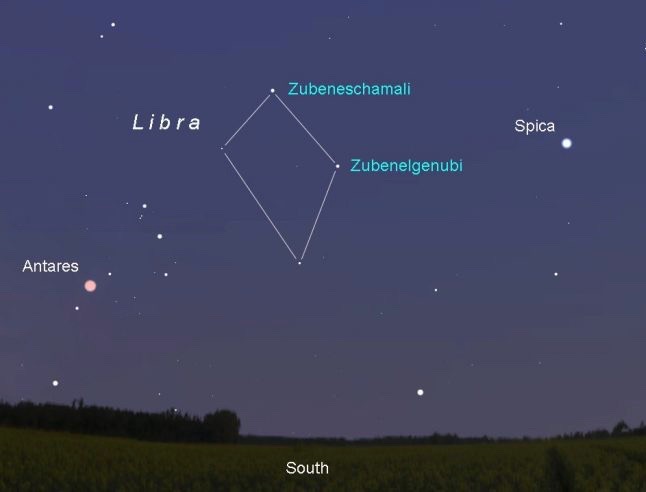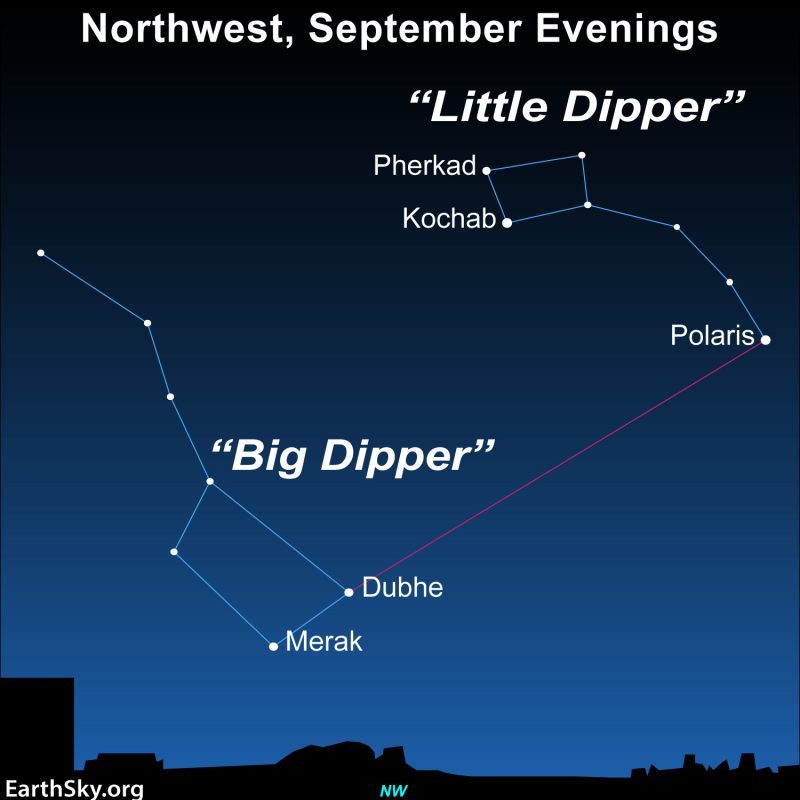Listen to this episode on Sky & Telescope’s YouTube channel.
As it starts to get dark, look well above where the Sun set, and you’ll easily spot Arcturus, the third-brightest star in the entire nighttime sky and the brightest star visible on summer evenings north of the equator. It’s the alpha star in the constellation Boötes, the Plowman.
Sky & Telescope
Look two fists above Arcturus, and a little to the left. If your skies are dark, you’ll see a set of stars about half a fist across that trace out the letter U — or maybe you’ll see them as a cup without a handle. This is the constellation Corona Borealis, the Northern Crown. Only one of its seven stars is very bright, and it’s called Alphecca, Arabic for “the bright star in the broken ring.”
During August, keep an eye on that arc of stars, or at least watch just to the left of Alphecca. That’s where astronomers are awaiting the appearance of a bright nova, or erupting star, some time in the next couple of months. It’s designated T, and alphabetic letters like that are celestial shorthand for a star that varies in brightness. This one is known to skywatchers as T Coronae Borealis — or “T Cor Bor” for short.
Ordinarily this star is much too faint to be seen by eye. But every 80 years it erupts spectacularly, becoming a couple thousand times brighter in just a few hours. At its peak, it will roughly match the brightness of Alphecca nearby. This abrupt brightening has earned it the nickname “Blaze Star.”
Meanwhile, slide your gaze well to the left of Arcturus and lower down until, a little to the west of due south, you reach Antares, the heart of the constellation Scorpius. Antares means “the rival of Mars.” It’s an enormous red supergiant star about 550 light-years away. A slightly gibbous Moon will pass near Antares on the evening of August 14th — and they’ll be really close together as seen from the West Coast.
If you’re a planet-watcher, plan to drag yourself outside early on Wednesday, August 14th. Look toward the east, and you’ll easily spot brilliant Jupiter, the King of Planets — accompanied by a tiny blip just above it. That will be Mars, and these two planets will be less than ½° apart!
Over in the evening sky, two other planets are emerging into view. Venus is climbing very slowly into view low in the west, but it’ll be challenging to spot. The other new arrival is Saturn. It doesn’t reach opposition, the point in the sky opposite the Sun, until early next month. But it rises in the east by about 9 p.m. in early August and in late twilight, roughly 7 p.m., by month’s end.
There’s lots more to discover overhead during August nights. So get the details by listening to this month’s episode of the Sky Tour astronomy podcast. Please join me as I take you on a personally guided tour of the nighttime sky!
Read the full podcast transcript.




